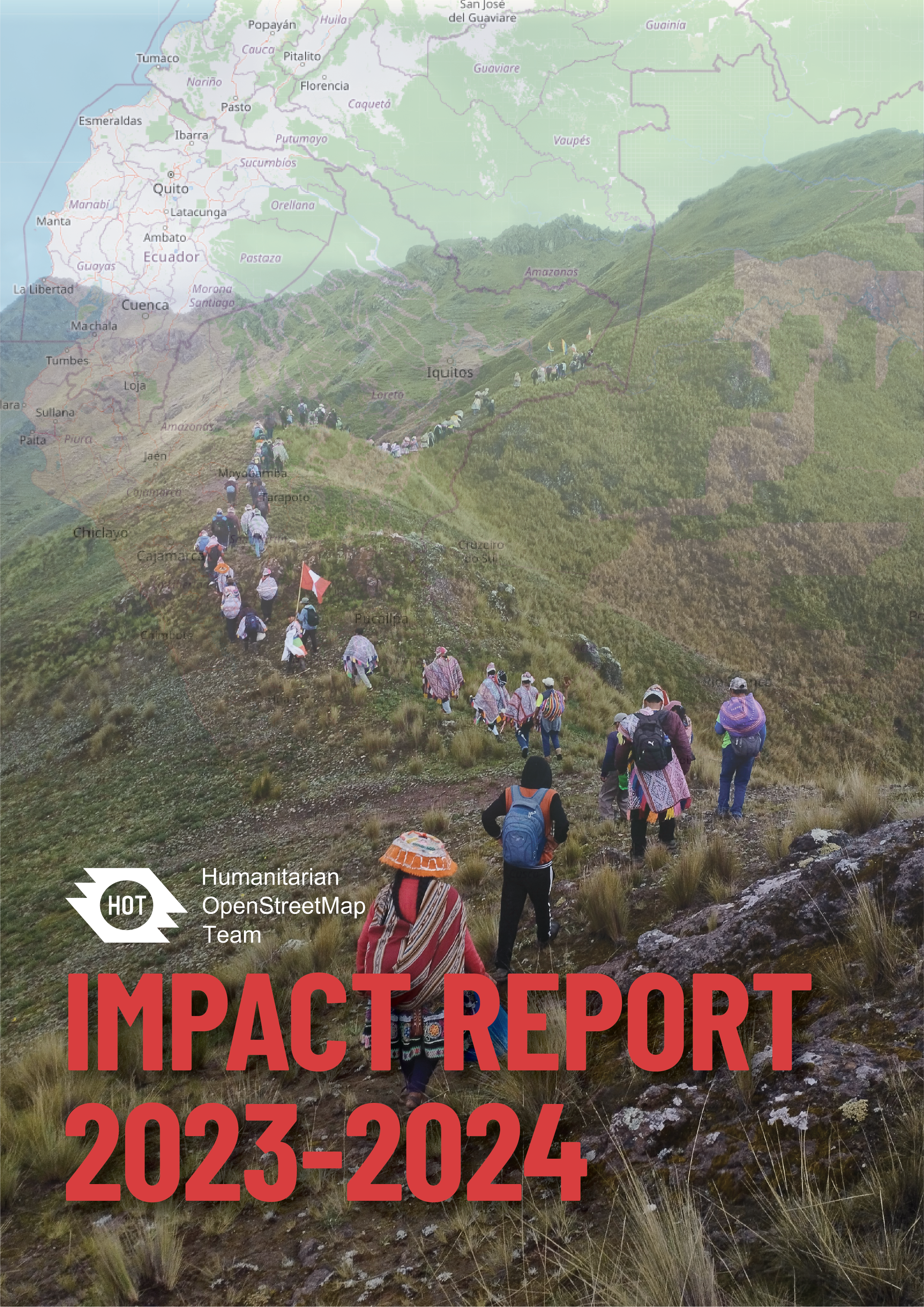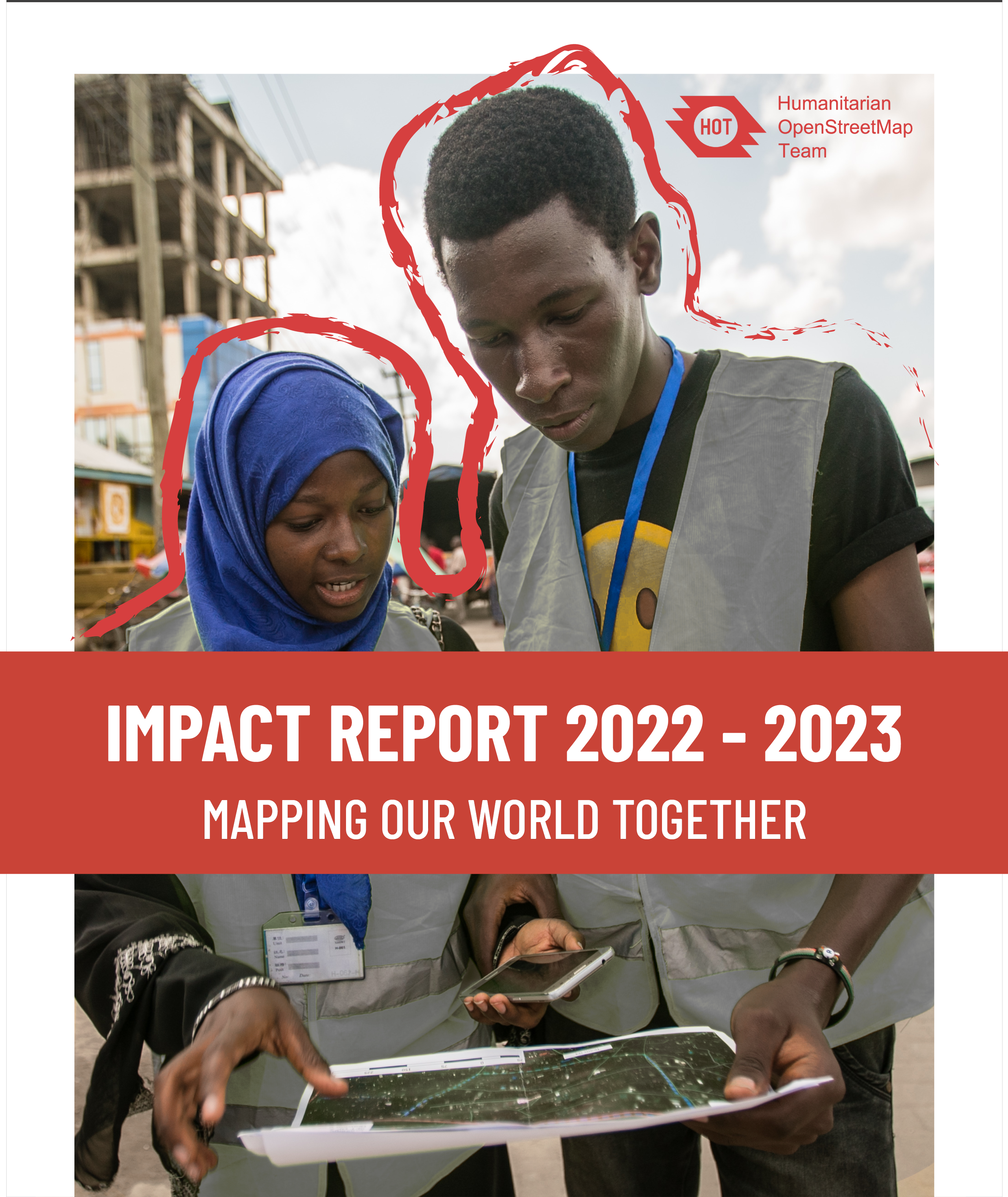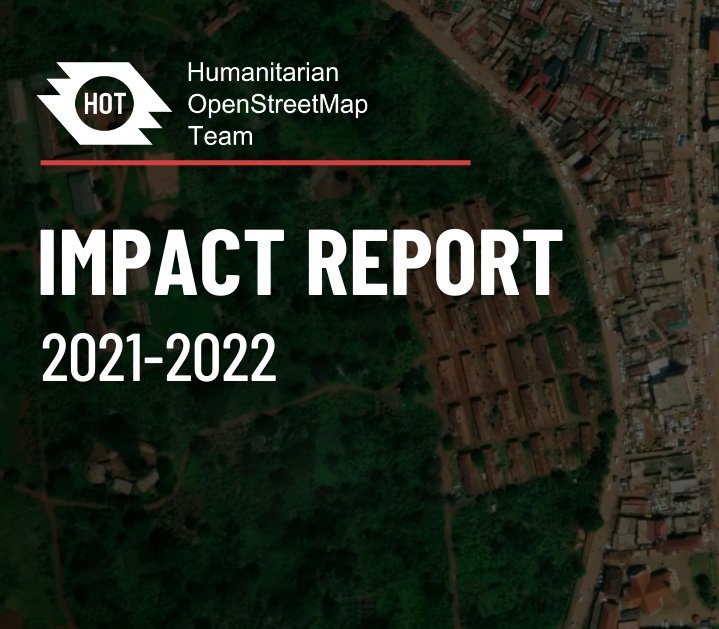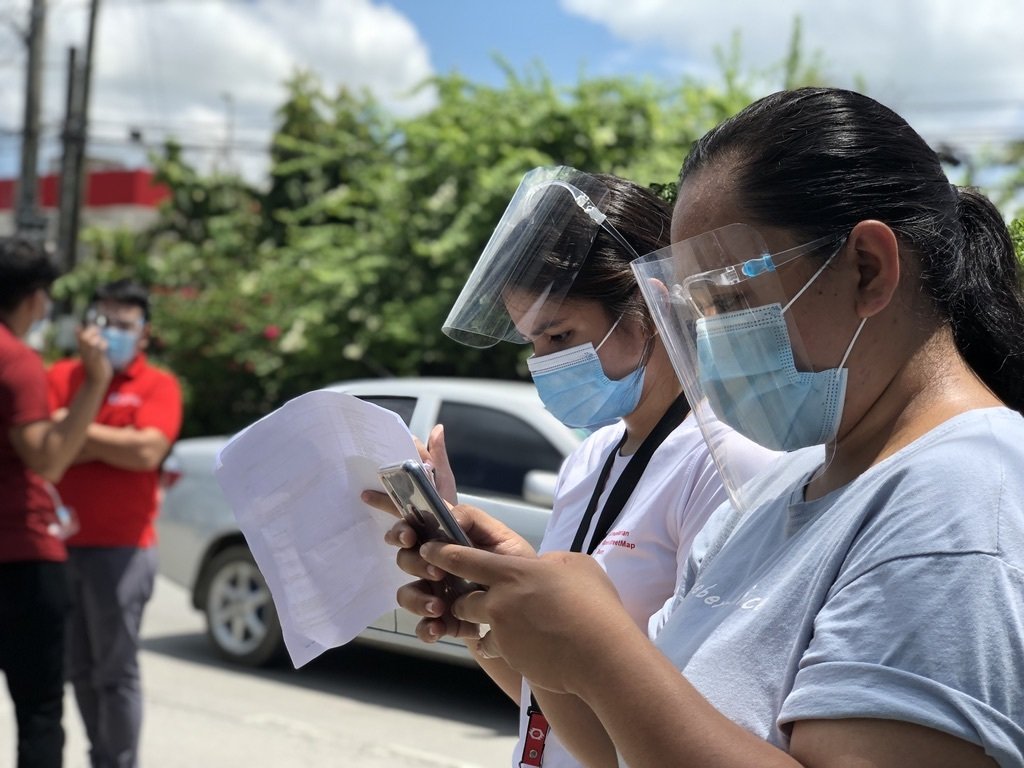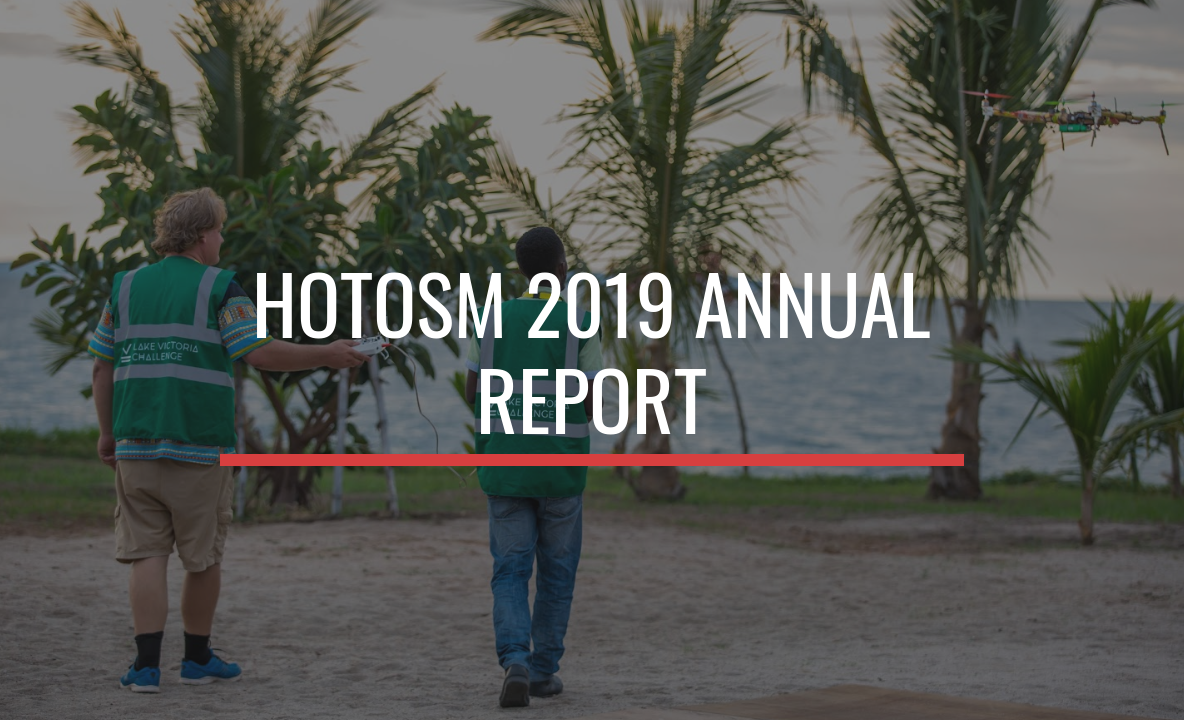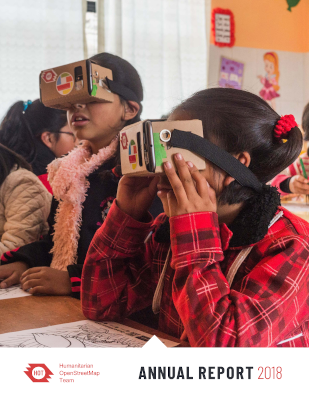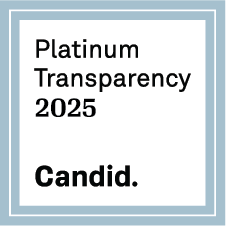Annual Reports
Each year, we summarize our work and impact around the world for our stakeholders and community. See how your mapping and financial support have empowered communities worldwide with open data.
2023-24 Impact Report
This year’s report highlights our dual progress in climate resilience and AI. Our Climate-Ready Cities program delivers accurate local maps for adaptation in vulnerable regions, while our fAIr initiative empowers communities to train their own AI models for more representative mapping. Supported by our global community, we assisted 46 disaster responses and mapped areas home to over 933 million people—moving closer to our goal of reaching one billion. Our focus remains on enabling communities to map their own futures.
2022-23 Impact Report
In this year’s impact report, we reflect on HOT’s transformations since its creation in 2010 after the Haiti Earthquake. Following our new Living Strategy, we aim to consolidate ourselves as a catalyst for community-driven open mapping, which we have done through our four Regional Hubs, as this report showcases. You will also find exciting technological advances and new milestones, as we move closer to mapping an area home to one billion people.
2021-22 Impact Report
The 2021-22 Impact Report is a virtual world tour of humanitarian open mapping projects around the globe. We spotlight projects in the Democratic Republic of Congo, Kenya, Uganda and Nepal, and we’ll also make stops in more than 40 other countries where the open mapping movement is touching people’s lives. The Impact Report is an exploration of the intersection between technology and the global open mapping movement and the extraordinary impact it is having in global communities.
2020-21 Annual Report
This past year, Covid-19 exposed the world’s devastating inequalities, disproportionately affecting the communities we serve in low- and middle-income countries. Supported by the H2H Network, HOT coordinated its most extensive crisis mapping activation in history to identify where at-risk populations live and where data on health infrastructure is missing. We also set up HOT’s first-ever Rapid Response Microgrants, quickly mobilizing funds to seven OSM communities looking to support the pandemic response in their countries. Beyond Covid-19 response, we opened regional hubs in the Asia Pacific and Eastern and Southern Africa and supported 27 communities with grants that contributed to the training of over 1,700 people in creating and using OSM data.
2019 Annual Report
The HOT community came together in 2019 at unprecedented levels to meet new humanitarian demands. Responding to Cyclone Idai, over 4,000 community members created maps used on the ground by the IFRC and MSF. Community grants in Peru, Tanzania and Zambia made a real impact on the digital gender divide, and new projects were launched in the Philippines to map some of the country’s largest cities and in the DRC to respond to the Ebola outbreak. Remote teams and individuals mapped every road in Indonesia, contributed to “Ayuda Venezuela”, mapped wildfires in Bolivia and areas affected by Hurricane Dorian in the Bahamas. By the end of 2019, we neared a major milestone - 200,000 mappers.
2018 Annual Report
In 2018, the HOT community continued to build a map of the world where individuals and communities can represent themselves. This involved South Sudanese refugees mapping refugee settlements in Uganda, supporting displaced Venezuelans in the Caribbean, and mapping dense, flood-prone urban areas in Accra, Kampala, and Monrovia as part of Open Cities Africa. We also strived for greater inclusion of unrepresented communities, such as women and girls, by supporting these groups through providing Microgrants and the WomenConnect project in Peru and Tanzania. Our contributor community grew from 100,000 to nearly 160,000 people.






